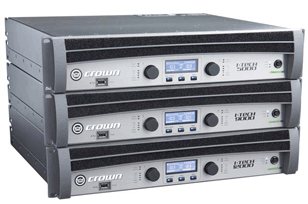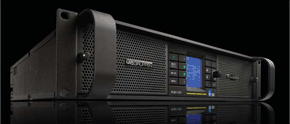Amplifier Technology Continues To Evolve While Maintaining Its Principles
Lab.gruppen PLM Series
While the basic principles of amplifier technology are relatively constant, the amount of control and flexibility associated with these products has greatly increased recently, thanks to new features like remote management and lightweight design.
The green factor has affected every sector of AV design, and amplifiers are no exception. “Companies are trying to find out how to get more power to speakers and less power out of the wall,” said Steve Seable, product manager for Yamaha. “As systems get bigger, the power they need to function gets bigger. But what comes out of the wall isn’t infinite. Everyone wants to be a little greener, so it’s a trend to get more output for less.”
Lab.gruppen has made efforts to achieve sustainability as well. “On the green side, when our install line is used with our bridge, the result is extremely green,” noted Lab.gruppen director of sales, Ken Blecher. “When they go into standby mode, it’s actually off. It’s only picking up a few milliwatts per frame, unlike other models that go to sleep and pull around 35- 40 watts per frame, which adds up quickly. For a performing arts center, or arena, those systems are really only used maybe like five percent of the time, so we can save them half or more on operating costs.”
Peavey has approached the green model as well, choosing to alter the construction of its amplifiers for space and weight purposes. “We believe in the next five to ten years, green will be a huge issue in larger installs and we’re focused on that,” said Fred Poole, general manager of product development. “Our IPR technology is revolutionary; it’s lightweight, low-, and greener. It’s also thermally efficient and easier to put in a variety of loudspeaker enclosures.”

Crown I-Tech HD
Extron made its own significant commitment to the green initiative by introducing the first amplifiers with an Energy Star rating. Casey Hall, Extron vice president of sales and marketing for North America explained, “With the focus on green building initiatives and sustainability, the Energy Star has been a way for consumers to determine product efficiency. The EPA recently released a new specification for commercial products. We are excited to introduce the industry’s first power amplifiers that are Energy Star qualified and meet the new Version 2.0 specification. Drawing less than one watt while in standby mode, customers will also find that these products use less energy, run cooler, and take up less space.”
Control is also an important issue with amplifiers, and manufacturers have made an effort to give users more options. “Users are looking to control their amps better, like at stadium jobs where you’re working with a lot of amps,” Seable explained. “Networking is important now as well. Look at churches: before one or two amps would do the whole room, but now there’s a need for networking throughout different rooms.”
Amplifier technology is constantly evolving, from more DSP presence to better networking control. While there will always be a need for power in large installs, in time the amount of power will be reduced. “Amps will be more efficient, in regards to LEED and Energy Star,” Blecher said. “The capability of changing the size or voltage of a channel with a software stroke is a reality and amp manufacturers are giving customers more options to keep the cost down while maintaining the quality they’ve already established.”
